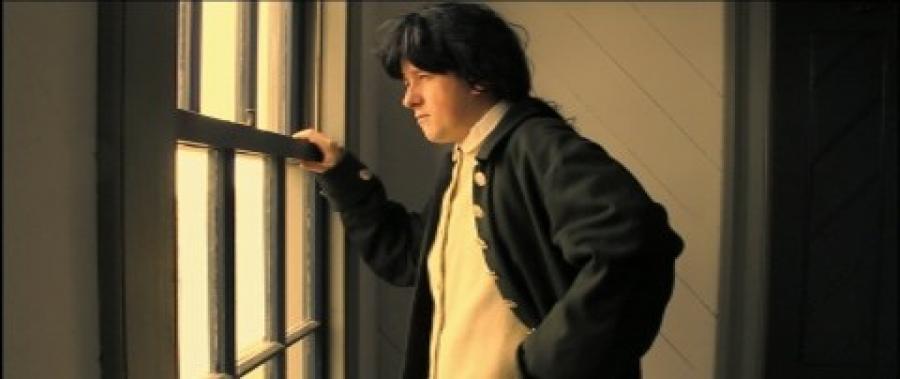Make a No Budget Movie: Chapter Eighteen
December 23rd, 2011
Final Cut
But . . . I couldn’t let it go. I’d spent too much time and effort to cast the project aside before it truly felt finished. Now I regretted my hasty, impatient work on the modern sequence. It just dragged the film down. It was too long, it slowed the narrative, and just seemed a little silly. Some who have seen it disagree, but I didn’t like it and needed to do something about it.
Tom Saxon twenty years on.
The solution should have been obvious, and that was to reshoot or replace the sequence. But I needed to recharge my batteries before my brain was willing to give it another go. In the mean time I tried to take the easy route, and made a one hour cut of the film in the summer of 2010. This cut was okay and did give me the chance to improve the musical score in a couple of scenes, but still … I needed feature length. That meant at least 70 minutes.
By the fall of 2010 I was ready. I had to reshoot the modern sequence. Except it wouldn’t be modern. I came up with the idea of having Jonathan play Tom Saxon as an older man at around the time of the American Revolution. The movie was thus a flashback told by him as he writes letters of his experiences in Noble’s Rangers twenty years before. This would involve some voiceover narration, a big no-no to some directors (and I generally agree), but it was my best solution. I also liked the idea of someone telling the story, a story that may have been true or may have been legend. After all, the movie was called A Tale of Bloody Creek.
I didn’t bother to write a new script, opting instead for a simple storyboard. I would shoot the sequence in two sessions. In the first, I would play Tom Saxon, but the camera would only focus on details: my hands, a quill pen, a candle, all the things needed to write letters. Then I would arrange a time with Jonathan and shoot the rest. I would also record narration, which I would d myself, to save time. The lines were recycled from the modern sequence script.
I filmed the first part in my rec room, partly by candlelight and partly under the light of a single lamp, in November, 2010. As usual, I cut it together immediately, substituting Jonathan’s clips with video storyboards. The narration sounded good. I also added some new music, a rights free recording of a Bach fugue, which gave the new scene a contemplative feel.
It wasn’t until January of 2011 that I was able to arrange time for Jonathan to film his bits. We met at the Citadel on a Sunday morning. I had a new costume for him, a fine gentleman’s coat from the 1780s, plus a wig tied with a bit of black ribbon (the same wig Mike had worn as Renard, only washed, combed, and trimmed). For a set I chose one of the landings in one of the historic buildings. The shots were all simple: Jonathan had to stare out a window, sit and pretend to write with a quill, look up, look own, do the same thing from another angle. That was it.
We were done in twenty minutes.
Over the course of the next week I recut my movie, sprinkling the new letter writing scenes throughout its length, replacing all of the modern sequence scenes. I also trimmed some little bits here and there that I didn’t think worked so well. When I was done, the finished film was 71 minutes long. Short, but still a feature. And much tighter, much more powerful.
In March, 2011, I released the final cut of A Tale of Bloody Creek online, for free.
It cost me nothing to make but time and effort. It will cost you nothing to watch.

